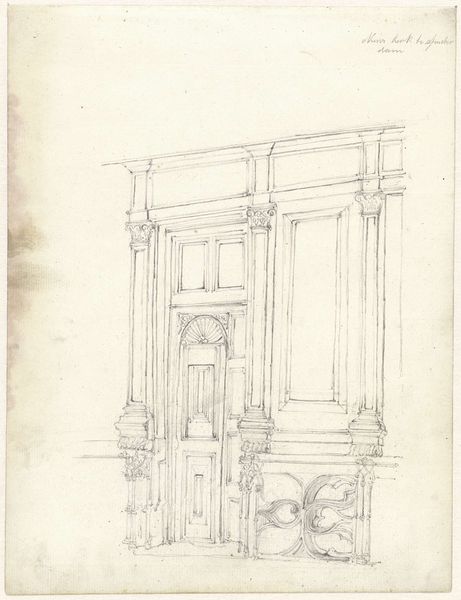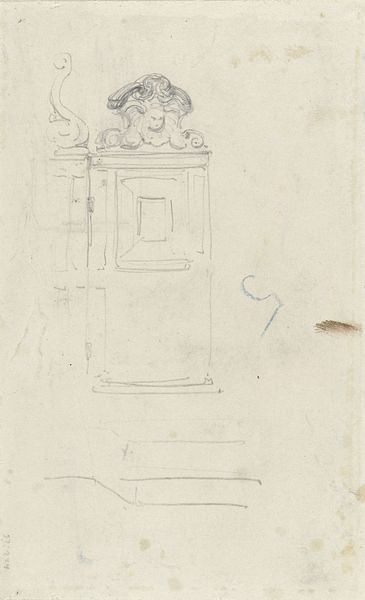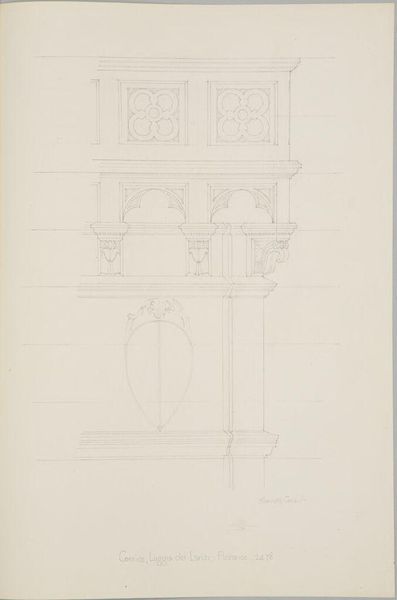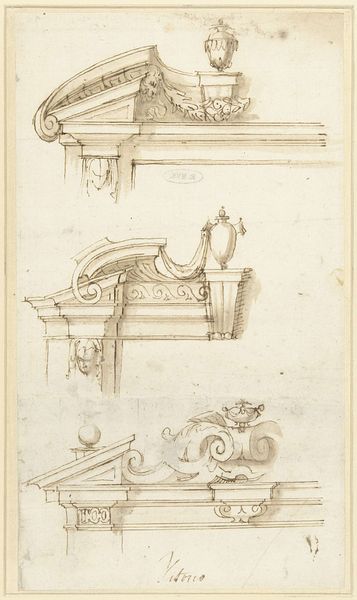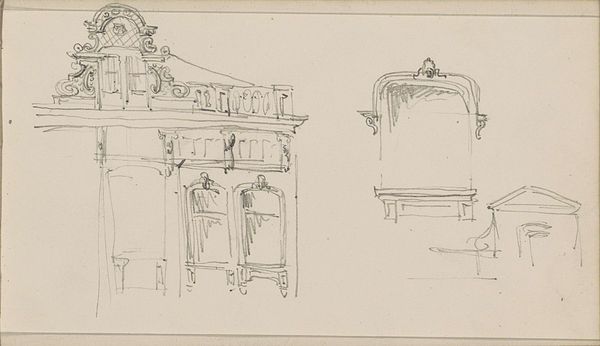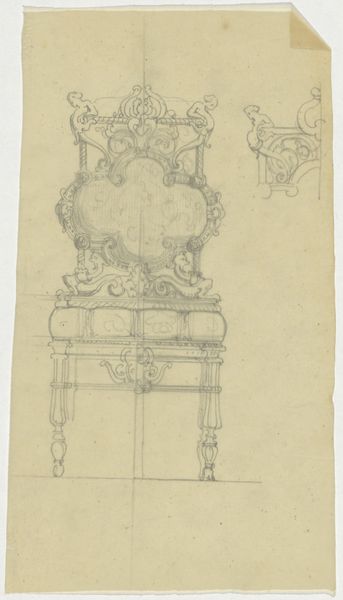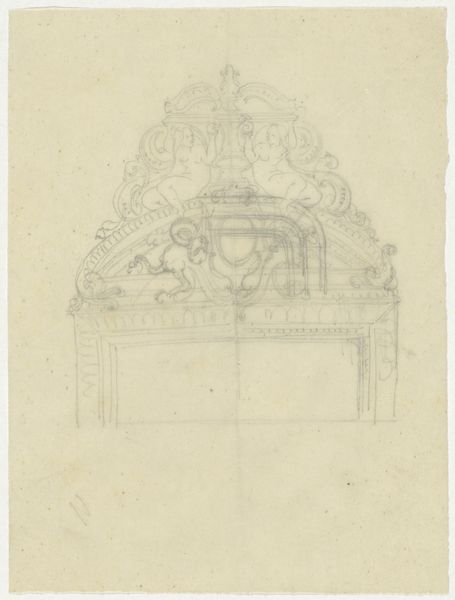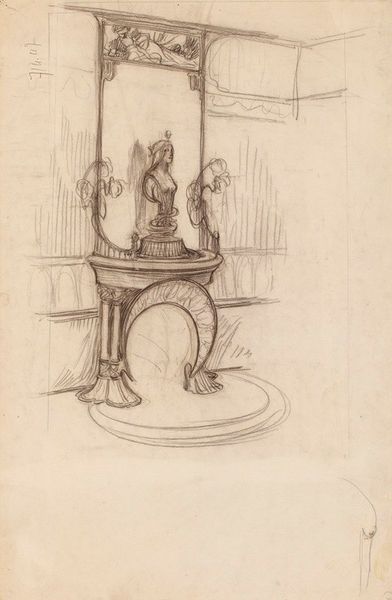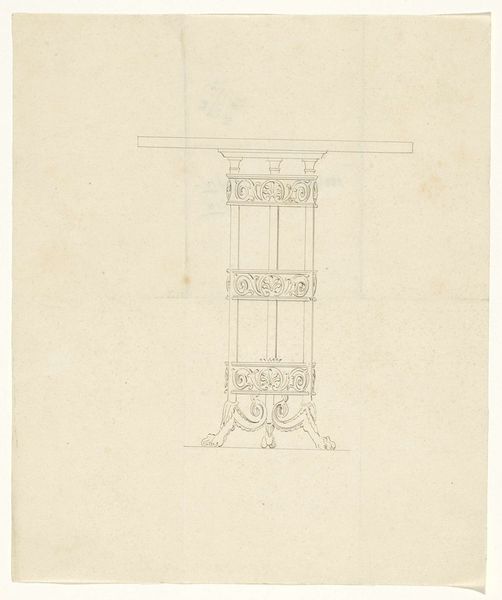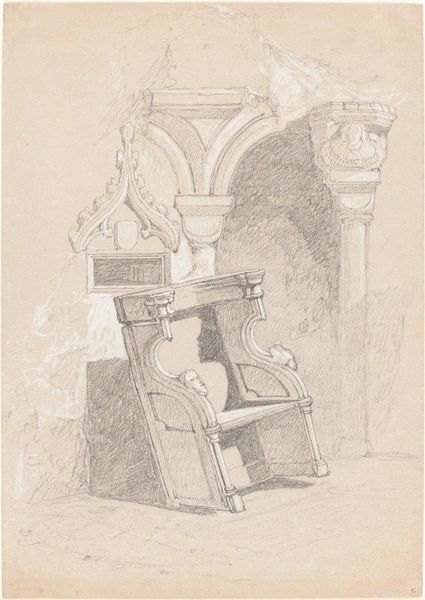
#
amateur sketch
#
light pencil work
#
quirky sketch
#
pencil sketch
#
personal sketchbook
#
idea generation sketch
#
sketchwork
#
pen-ink sketch
#
sketchbook drawing
#
initial sketch
Dimensions: height 115 mm, width 83 mm
Copyright: Rijks Museum: Open Domain
Curator: This pencil drawing is entitled "Hoekje van een klavier," or "Corner of a Keyboard," by Jean-Baptiste Isabey, created in 1837. It is currently held in the Rijksmuseum. Editor: My first impression is how light and almost fleeting the sketch is. It has an intimate, domestic feel, as though we’re catching a private glimpse of someone’s musical practice. Curator: I agree. Look at the precision of the lines, particularly in rendering the ornamental details on the piano. The artist really understands the construction of the instrument; one can almost imagine his hands following each curve of the keyboard and legs. The delicate pencil work seems to reveal the artist’s deliberate attempts at recreating the fine art of this musical instrument. Editor: Absolutely, and considering Isabey's broader portrait work, could this intimate setting reflect societal expectations of women and music during this time? Was music considered one of the few acceptable avenues of cultural expression available to them, creating what some may view as oppressive cultural demands? Curator: That is quite possible. The semiotics of musicality can be traced through various forms of artwork depicting people using instruments or at concerts, at least across the period in which this drawing was conceived. Perhaps it’s important that only a corner of the piano and the handwritten music sheet is captured, with only a suggestive quality as opposed to a descriptive image. Editor: I find it so intriguing how the unfinished quality and muted tones somehow amplify these ideas, the sketchiness almost mirrors the limited space allowed to women's self-expression in broader society during this period. And look at that score! Was its display more important than what its performance suggested? Curator: What strikes me is the relationship between structure and fluidity; on one hand, we have this incredibly geometric musical instrument; however, we also have spontaneous musical expression facilitated by the subject, who seems absent from the scene. I suppose it is the genius of Jean-Baptiste Isabey’s technical brilliance that allows us to draw various interpretations, which remain valid irrespective of context. Editor: Indeed. Ultimately, Isabey presents us with a delicate rendering, both aesthetically and culturally loaded within its historical period. Curator: The work exemplifies a harmonious blend of technical skill and evocative imagery.
Comments
No comments
Be the first to comment and join the conversation on the ultimate creative platform.
